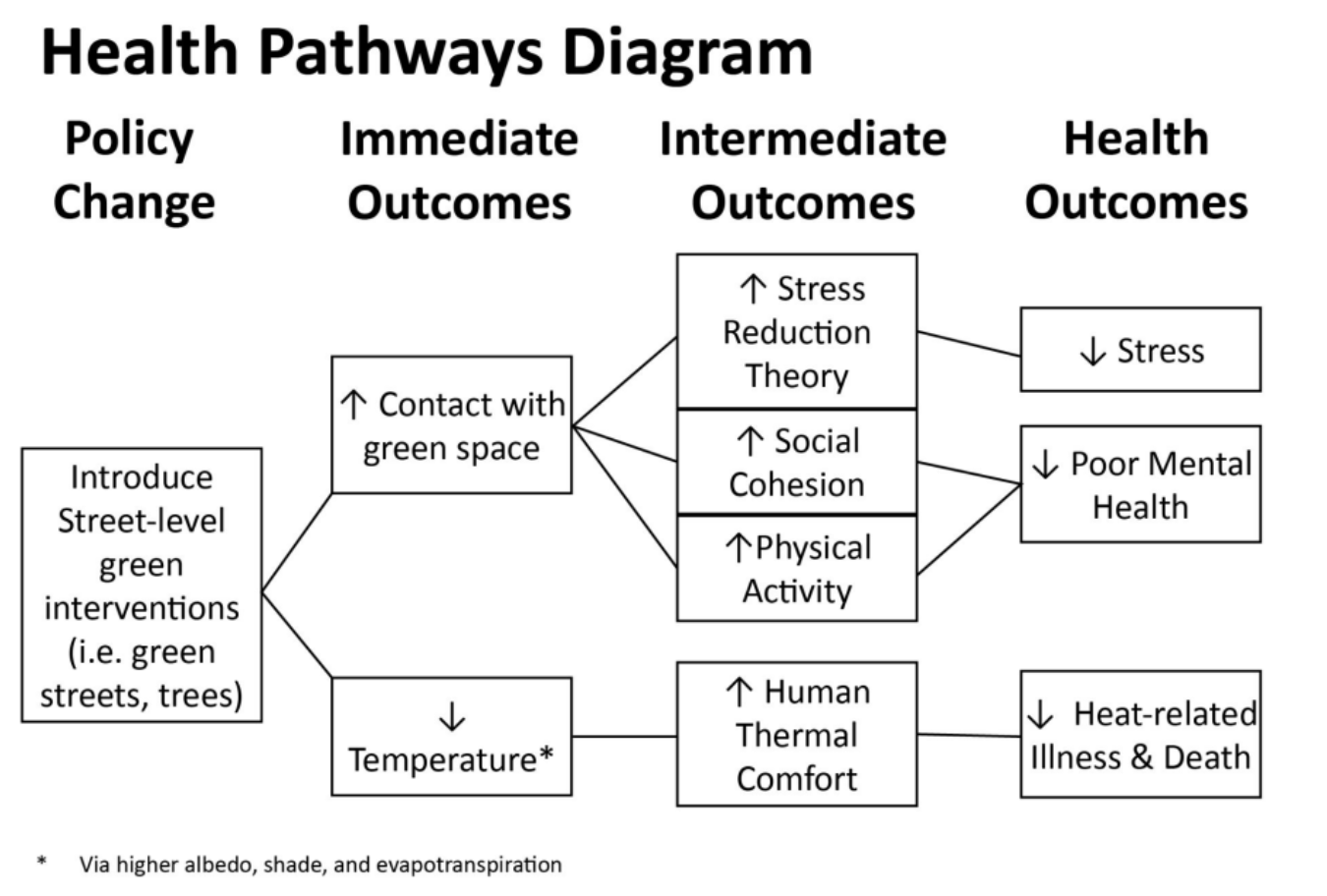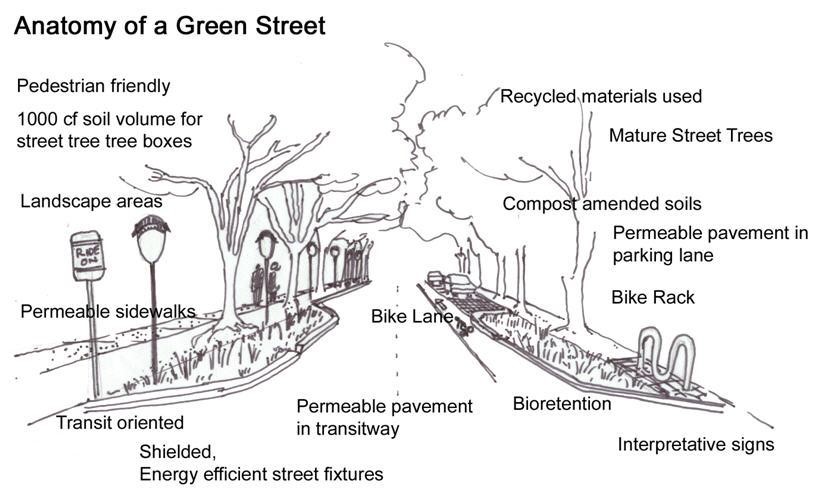Key Takeaways:
- “Green streets” have more plants, soil, and water-friendly systems than traditional streets
- Originally, green streets were designed to capture rainwater locally
- Green streets also benefit physical and mental health, and increase green space in a community without having to build new parks or open spaces
- There is a correlation between areas with less green streets and poor mental health
Leota Coyne
Leota Coyne is a Master’s student in City & Metropolitan Planning at the University of Utah. As part of her program, she prepared a report on how Millcreek could improve the health of some of its more vulnerable residents through changing the built environment. A portion of her report is included below. Other communities can also learn from this case study how they can increase green space in their communities to most benefit their residents.
Mental health and heat-related illness are important health considerations in communities that relate to the greenness of streets. By completing street greening through the EPA model of ‘green streets’, street greening additions provide benefits beyond health such as stormwater management and climate change adaptation (EPA, 2022). Academic research supports that there is a connection between street greening and improved mental health as well as reduced heat-related illness or death. Street greening is a viable opportunity to support positive health outcomes.
Using this framework, areas in Millcreek with low street vegetation levels, poor mental health, and/or high vulnerability to heat-related illness were identified as spaces where street greening efforts may best influence mental health and reduce heat-related illness.
A vegetation analysis was calculated around roads in Millcreek using the Normalized Difference Vegetation Index. This analysis found that the western portion of Millcreek generally had less vegetation than the eastern portion of the city as of August 2022. Poor mental health indicators from the Utah Healthy Place Index and higher indicators of vulnerability to extreme heat from the Social Vulnerability Index were both concentrated in the western portion of Millcreek. On the other hand, the eastern portion of Millcreek had better mental health and lower social vulnerability in addition to more vegetation around roads.

Combining the mental health and social vulnerability indicators with the vegetation data shows that western Millcreek could benefit from street greening. Specifically, areas with little vegetation, poor mental health, and vulnerability to heat where street greening efforts may have the greatest impact on health. Other cities can use this model to identify areas where street greening can have a positive impact on the community and improve health outcomes.

